June 8, 2016
It’s been a long 2 days of struggling with very slow internet at our house. The upgraded connection our host promised isn’t what we expected, and it’s taking both of us much longer to work on projects than it normally would. I’ve had to reschedule both client calls this week, and while Maureen’s been able to get on Skype calls, I can’t get them to work for me.
Frustrated, I finally give up in the afternoon and propose that we head to Laguna de las Ninfas (Lagoon of the Nymphs), which has been on our bucket list for the last week or so.
It’s after 3:00 pm by the time we set out, tattered map of Puerto Ayora in hand. We have a pretty good idea of where we’re going, but as we wander down towards the ocean, we quickly forget which street we’re on or which one we’re looking for.
Happily, Puerto Ayora is quite small. We turn a corner onto a major-ish street and there before us is the entrance to Laguna de las Ninfas. It’s late enough in the day to forgo the sunscreen, but I gratefully apply the bug repellent my friend offers me.
Once past the signboard and out onto the boardwalk, our first view of the Laguna is stunning.
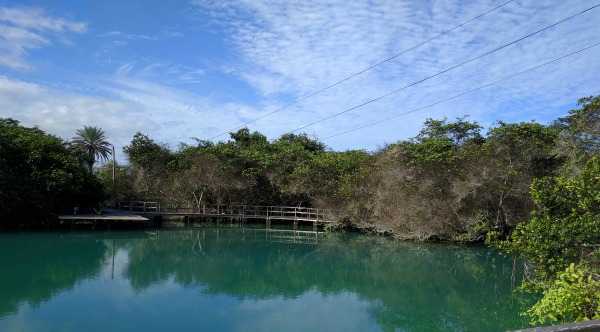
The boardwalk takes us around the lagoon. Sometimes we’re walking on land
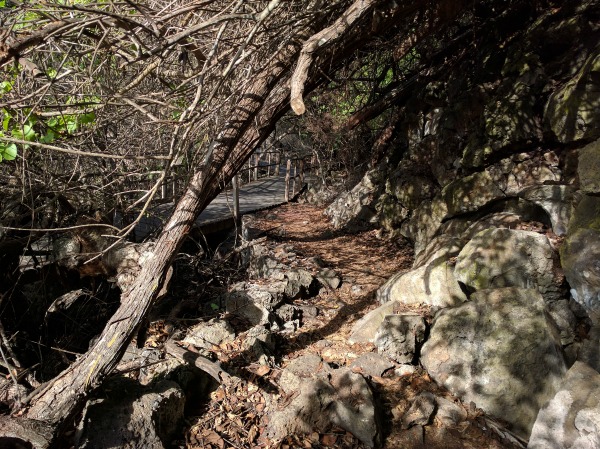
and sometimes over the water itself.
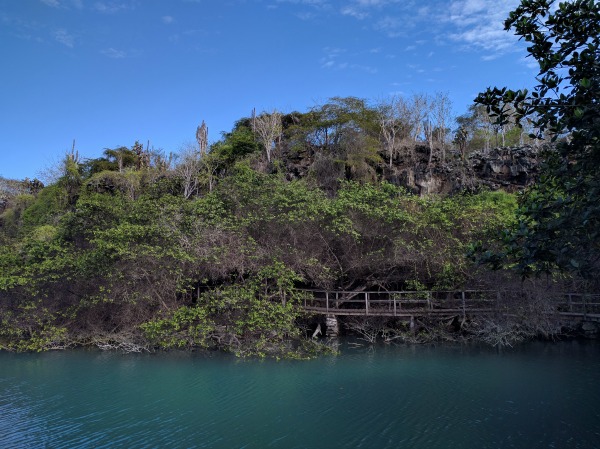
There fish in the water, too quick to capture with my smart phone camera. Frigates float on the afternoon thermals far above our heads. The far side of the lagoon backs onto high cliff walls that immediately make me think of pirates scaling those cliff faces, cutlasses clenched between their teeth.
Mangrove trees flourish on both sides of the boardwalk, anchoring the lagoon’s shoreline and providing all kinds of hiding spots for fish and birds.
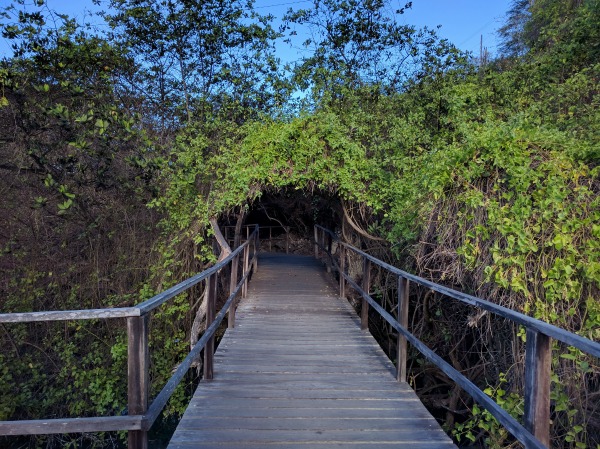
Near the base of the cliffs we discover several small pools that have been cut off from the main lagoon.
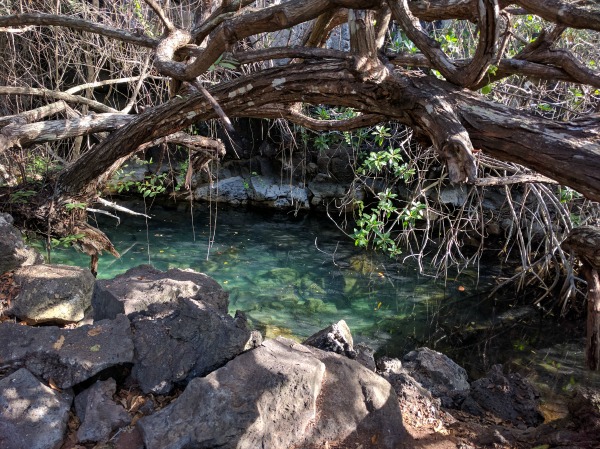
The water is so clear we can see right to the bottom. Small fish dart among the rocks, and the boulders look as though they’d make good climbing.
As we continue to explore the lagoon, the color of the water changes from brilliant turquoise-green
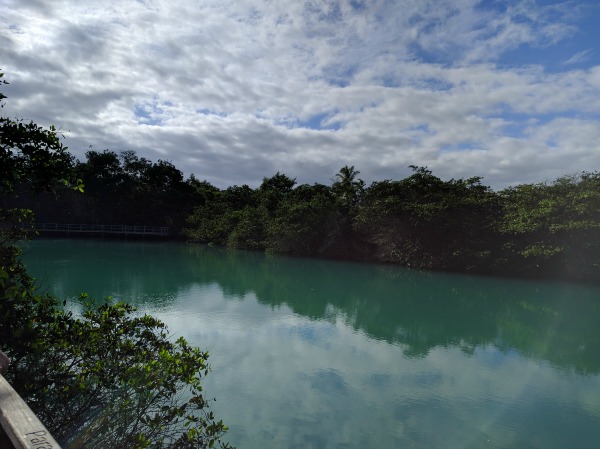
to a deep captivating blue.
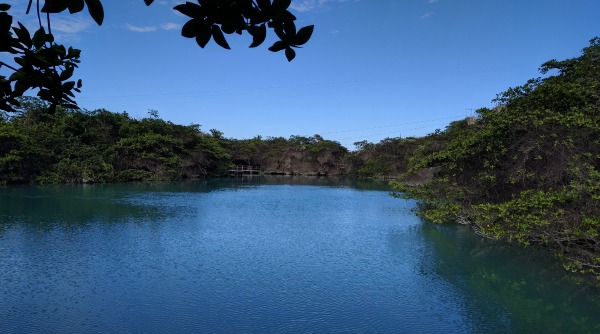
Near the end of the boardwalk we come across a new type of bird.
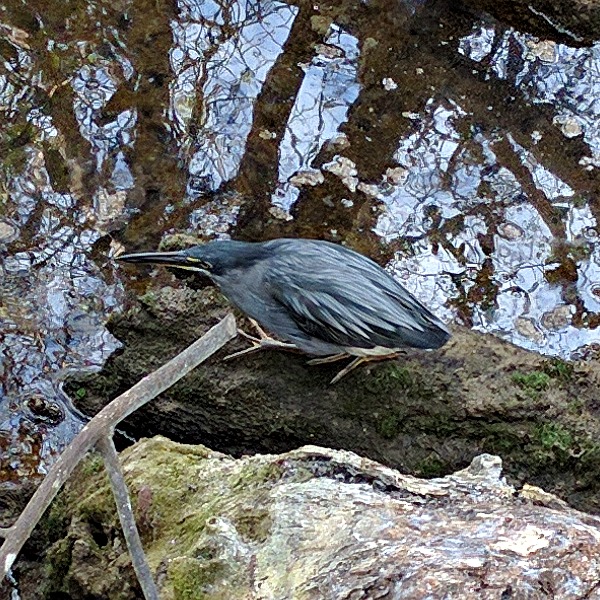
It’s too small to be a crane or a heron. Perhaps it’s an egret? That doesn’t seem quite right either.
We watch the “not an egret” for a long time. It loves perching on the rocks along the water’s edge, still as anything, then darting into the water in one swift movement to spear a little fish. We lose sight of it for a while, but rediscover him perched at the very tip of a mangrove branch, far out over the water.
I watch him for many minutes as he hangs out over the water. Here at the end opposite the intake from the sea, the strong ocean breeze is easy to feel. There are fish below in the water, great schools of small grey fish that flash silver in the afternoon light. The afternoon silence hangs heavy on the lagoon, marred only by the splash of the water and the conversation of three teenagers nearby.
Finally, just as I’ve given up hope, the “not an egret” launches itself from the tree branch straight into the water. It emerges with a much bigger fish than I’ve seen previously, and carries it off into the woods.
We see another “not an egret” the next day, and I finally do some research online. Our “not an egret” is a lava heron. Its unique blue-grey coloration is designed to blend into the lava rocks. During mating season, its legs turn bright orange. Like many species here, the lava heron is endemic to the Galapagos (meaning it’s only found here). The internet says they’re found all over the intertidal zones and mangrove groves in the islands.
It’s nearing dinnertime when we finally leave the Laguna. I’m loathe to leave the tranquility of the Laguna. However, I also need more postcards and stamps, so I head into town to visit the ATM and a tourist shop.
After a longish wait for the ATM, I wander over to the malecon near the docks. During the day the malecon is just a square for people to pass through. In the dusk, though, it’s sprouted a men’s three-on-three volleyball game. They appear to be playing with a slightly deflated soccer ball.
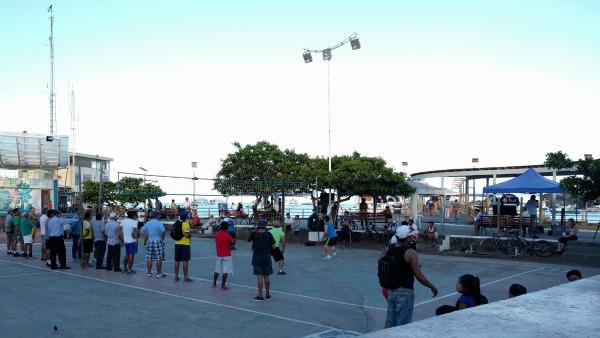
I watch them for some time, remembering my brief year as a high school freshman volleyball player.
Finally, I go into a shop across the street for postcards and stamps. To my delight, the woman with the inviting face from the ATM line is chatting with the shop proprietor. She strikes up a conversation in excellent English, to which I attempt to reply in Spanish.
It’s just light chitchat, but she tells me that I have an open and engaging face, and I return the compliment. She’s a native to the islands, whereas the shopkeeper is almost native – he moved there as a baby.
Both this gal and the shopkeeper compliment me on my Spanish. Many Americans don’t bother to speak any Spanish at all, so I chalk the compliments up to the effort of trying, rather than my execution.
Nevertheless, I’m delighted by the conversation and the interaction. It’s the kind of conversation I have often when I’m traveling, but this is the first time it’s happened on this trip.
All in all, it’s been a successful day despite the internet and work troubles in the morning. There’s only one more day of slow internet to get though. On Friday we’re heading out to Isla Isabela, home of flamingos and penguins!

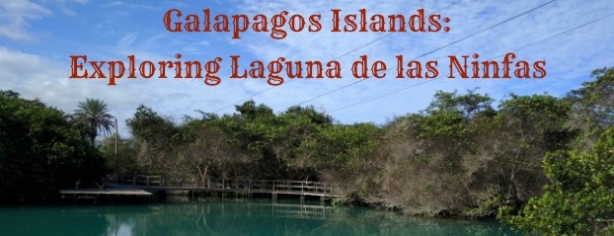









Yes, Lava Heron, part of the Striated Heron family. Non-migratory, but easy to see how they might have ended up in the Galapagos, 700 miles from the mainland.
More difficult to see how the tortoise variants “rafted” to the Galapagos, even with the Humboldt Current. (Their) ancestor looks nothing like them (except for being a tortoise) — much smaller, etc.
The iguanas are also interesting — a genetic split between land & marine variants about 8 million years ago, though they can still interbreed. The genetic split was an estimated 1 million years before the present-day islands formed — probably on an eroded and submerged hotspot landmass.
Obviously the Galapagos Penguin is also unique, though it’s easier to see how they might have migrated north on the Humboldt Current during some warm/cold spell that depleted their food supply.
Definitely a unique and interesting place that you’re at — very few that are similar (the Hawaiian Islands being one of them). I hope you continue to enjoy the experience, even with sunburns. You could always try a wide-brim straw hat with a scarf “tie-down” — it got your great-grandmother through years & acres of flower planting/maintenance in the hot sun, though (her) ankle-length flowered cotton dress isn’t required.
According to my friend who’s done some reading, most species in the Galapagos were either blown off course during a storm, or found themselves on some bit of vegetation that whisked them out to the islands. I have to say the Lava Heron is quite cute. Not as cute as the penguins, though – those are coming up in the next post.
I would love to go to the Hawaiian islands. It’s been on my to do list for some time. It’s the kind of place I’d want to go with someone, but I may have to go it alone one of these days.
My friend Maureen does have a bit straw hat, and we saw lots of people with scarf tie-downs. They are not attractive, but they are effective. Had I stayed much longer I might have gone for a hat of some kind. Or, just tanned the back of my neck such that it didn’t need protecting any more.